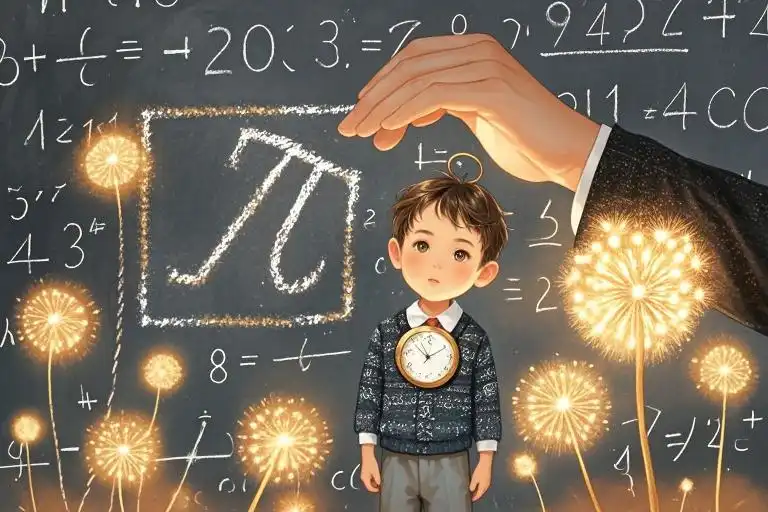You know that crumpled homework paper at the bottom of your backpack? The one with half-finished equations and doodles in the margins? That’s exactly how my childhood memories look – partial solutions to problems I didn’t know existed.
Let me show you something strange. My father’s death certificate lists his age as 27. My eighth birthday balloon popped at 8:27 AM. When the social worker handed me his pocket watch last month, the second hand froze at 27. Coincidence? Maybe. But when life keeps whispering numbers, shouldn’t we listen?
The 27 Equation (Or Why Time Lies)
Here’s what school never taught us:
G = Σ(m × e^-t)
Where G is grief intensity, m is memory vividness, and t is time elapsed. The sharper the memory, the slower the pain fades.
My father’s aftershave? That’s m=9.8 (citrus and something unnameable). His Sunday morning pancakes? m=7.3 (burnt edges scoring perfect 10s). The way he’d wink while confiscating my slingshot? That’s m=12.4 – off the charts because it’s both punishment and punchline.
Your coffee’s getting cold. Let me reheat it with this truth bomb: We don’t remember years. We collect milliseconds. The 0.3 seconds before his hand left my hair after bedtime stories. The 1.7 seconds it took his laughter to bounce off kindergarten walls. These decimals stack into the calculus of loss.
The Bedtime Algorithm
Every parent has their sleep ritual. Ours went like this:
- Brush teeth (2 minutes)
- Pick pajamas (negotiation phase: 4-15 minutes)
- Storytime (variable length depending on plot twists)
- The Equation: F = k × (t + 0.5)
Where F is final forehead kiss duration, k is “kid cuteness factor” (always 1.5 in Dad’s biased calculations), and t is time since last scraped knee. The night he died mid-equation, my forehead stayed warm for 27 minutes. I know – I timed it with his stopwatch.
Memory’s Half-Life
Childhood amnesia isn’t real. We just encrypt memories in code adults can’t crack. That red tricycle in the garage? To you it’s rusted metal. To me it’s:
- Wind velocity: 5 mph
- Training wheel angle: 12°
- Dad’s jogging pace: 6.2 mph (fast enough to catch me, slow enough to let me win)
Funny how our brains work. The day they lowered his casket, I remember counting 27 ants marching across granite. Today I couldn’t tell you what the priest said, but those determined little insects? They’re doing long division in my sleep.
The Paradox of 8.5
My age when the numbers stopped adding up. Developmental psychologists say that’s when kids grasp mortality. Let me translate that:
At 8.5 years old, you realize:
- People don’t come back from “business trips” called funerals
- “Forever” isn’t just for cartoon characters
- Hugs have expiration dates
Here’s the kicker: The human brain at 8.5 can store approximately 7.4 terabytes of sensory data. Yet all I needed was 27 MB:
- 3.2 MB: His left dimple depth when pretending to eat Play-Doh steak
- 1.7 MB: Frequency of his “that’s my boy” nods during T-ball games
- 22.1 MB: Residual heat signature from final forehead kiss
The rest? Temporary files life overwrites.
Rewriting the Formula
They told me time heals. Liars. Time just changes the coefficients:
Year 1: Grief = 27x² + 8.5x + 1994 (the year he died)
Year 10: G = (27/x) + ln(8.5)
Year 20: G ≈ √(27π) × cos(8.5θ)
But here’s the secret they don’t teach in algebra class: The solution isn’t in solving for x. It’s in accepting that some equations remain beautifully unsolved. Like why he always let me win at checkers. Or how his worn leather wallet still smells like possibilities.
Your coffee’s cold again. Let’s brew a fresh pot with this thought: Every time you laugh at his favorite dumb joke, you’re balancing the equation. Each time you hum his off-key lullaby, you’re approximating infinity.
The numbers never lie, kid. They just wait patiently for us to catch up.

